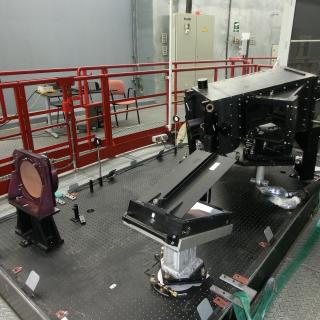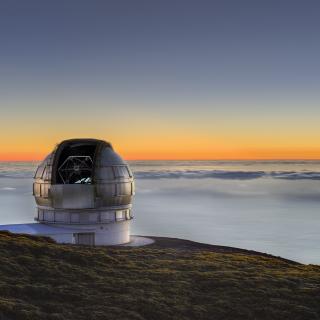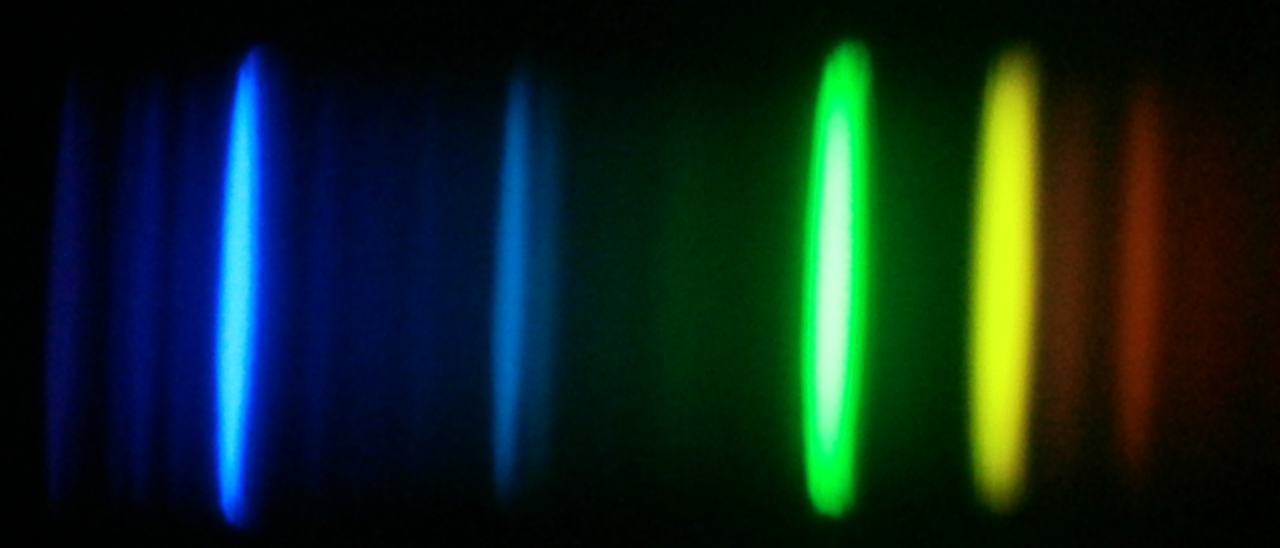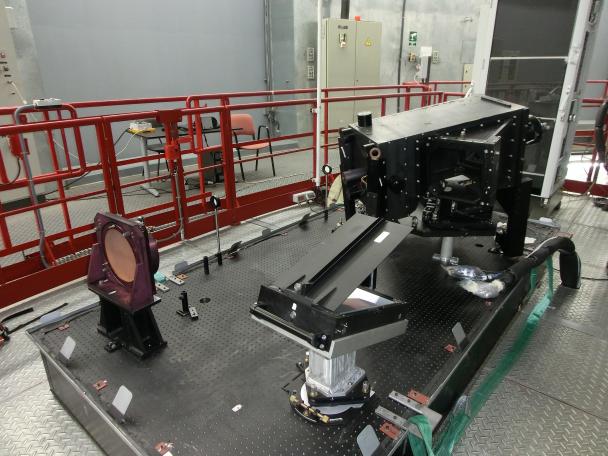Subvenciones relacionadas:
General
La espectroscopía de estrellas nos permite determinar las propiedades y composiciones químicas de las mismas. A partir de esta información para estrellas de diferente edad en la Vía Láctea es posible reconstruir la evolución química de la Galaxia, así como el origen de los elementos más pesados que el boro, forjados principalmente en los interiores estelares. También es posible estudiar la formación estelar, y la de la propia Galaxia, a través de la huella que deja el potencial Galáctico en las órbitas de las estrellas, y de las distribuciones de masa, edad y la abundancia de elementos pesados.
La obtención de espectros con alta resolución espectral, apropiados para estudios de la composición química, requiere instrumentación sofisticada y eficiente. Esto es especialmente cierto en investigaciones en las que se necesitan extensas muestras de estrellas, que exigen observar cientos, o incluso miles de fuentes de forma simultánea. El procesado y análisis de los datos debe ser automatizado para ser igualmente eficiente.
La interpretación de los espectros se basa en modelos físicos de las atmósferas de las estrellas, de donde se escapa la luz que observamos. Los ingredientes fundamentales para la construcción de estos modelos son la dinámica de fluidos, y las propiedades de los átomos, iones y moléculas, especialmente en lo que se refiere a sus interacciones con la radiación que proviene del interior estelar. Una vez que se tiene un modelo plausible, es posible calcular de forma detallada cómo se propaga la radiación a través de la atmósfera estelar, y el espectro emergente, para, de forma iterativa, compararlo con las observaciones y refinar el modelo.
Este Proyecto incluye tres diferentes frentes de investigación:
- La mejora de los modelos de atmósfera y las simulaciones de espectros estelares.
- El desarrollo de herramientas para la obtención, reducción y el análisis de observaciones espectroscópicas, y en particular para la determinación de abundancias químicas en estrellas.
- El diseño, preparación, y ejecución de estudios espectroscópicos de estrellas con el fin de entender a) los aspectos más relevantes de la física de las atmósferas estelares, b) la formación y evolución de las estrellas, c) el origen de los elementos químicos y d) la formación, estructura y evolución química de la Vía Láctea.
Miembros
Resultados
- Completar la instalación y pruebas de HORuS en GTC
- Descubrir dos nuevas estrellas con abundancias de hierro inferiores a 100.000 veces el valor solar
- Completar la clasificación de los espectros de APOGEE con K-means
- Publicar una colección completa de espectros modelo para estrellas O a M
- Identificar la huella de la difusión química en las atmósferas de estrellas del cúmulo M67
Actividad científica
Publicaciones relacionadas
-
Star formation in IC1396: Kinematics and subcluster structure revealed by Gaia
Aims: We investigate the star formation history of the IC1396 region by studying its kinematics and completing the population census. Methods: We used multiwavelength data, combining optical spectroscopy to identify and classify new members and near-infrared photometry to trace shocks, jets, and outflows as well as the interactions between the
Pelayo-Baldárrago, Mara E. et al.Fecha de publicación:
12023 -
The Pristine Inner Galaxy Survey (PIGS) - V. A chemo-dynamical investigation of the early assembly of the Milky Way with the most metal-poor stars in the bulge
The investigation of the metal-poor tail in the Galactic bulge provides unique information on the early Milky Way assembly and evolution. A chemo-dynamical analysis of 17 very metal-poor stars (VMP, [Fe/H]<-2.0) selected from the Pristine Inner Galaxy Survey was carried out based on Gemini/GRACES spectra. The chemistry suggests that the majority of
Sestito, Federico et al.Fecha de publicación:
12023 -
The Pristine survey - XIX. Cu and Zn abundances in metal-poor giants
Metal-poor stars formed from a gas enriched by the ejecta of the explosion of one/few generations of first massive stars. With the Pristine photometry combined with the Gaia data, we selected a sample of bright giants metal-poor candidates to be observed at high resolution. Of the 43 stars observed, 36 were confirmed to be metal-poor, supporting
Caffau, E. et al.Fecha de publicación:
12023 -
The Robotic Multiobject Focal Plane System of the Dark Energy Spectroscopic Instrument (DESI)
A system of 5020 robotic fiber positioners was installed in 2019 on the Mayall Telescope, at Kitt Peak National Observatory. The robots automatically retarget their optical fibers every 10-20 minutes, each to a precision of several microns, with a reconfiguration time of fewer than 2 minutes. Over the next 5 yr, they will enable the newly
Silber, Joseph Harry et al.Fecha de publicación:
12023 -
ESPRESSO observations of HE 0107−5240 and other CEMP-no stars with [Fe/H] ≤ -4.5
Context. HE 0107−5240 is a hyper metal-poor star with [Fe/H] = −5.39, one of the lowest-metallicity stars known. Its stellar atmosphere is enhanced in carbon, with [C/Fe] = +4.0, without a detectable presence of neutron-capture elements. Therefore, it belongs to the carbon-enhanced metal-poor (CEMP−no) group, along with the majority of the most
Aguado, D. S. et al.Fecha de publicación:
122022 -
Overview of the Instrumentation for the Dark Energy Spectroscopic Instrument
The Dark Energy Spectroscopic Instrument (DESI) embarked on an ambitious 5 yr survey in 2021 May to explore the nature of dark energy with spectroscopic measurements of 40 million galaxies and quasars. DESI will determine precise redshifts and employ the baryon acoustic oscillation method to measure distances from the nearby universe to beyond
Fecha de publicación:
112022 -
The Gaia-ESO Public Spectroscopic Survey: Motivation, implementation, GIRAFFE data processing, analysis, and final data products
Context. The Gaia-ESO Public Spectroscopic Survey is an ambitious project designed to obtain astrophysical parameters and elemental abundances for 100 000 stars, including large representative samples of the stellar populations in the Galaxy, and a well-defined sample of 60 (plus 20 archive) open clusters. We provide internally consistent results
Gilmore, G. et al.Fecha de publicación:
102022 -
The Gaia-ESO Public Spectroscopic Survey: Implementation, data products, open cluster survey, science, and legacy,★
Context. In the last 15 years different ground-based spectroscopic surveys have been started (and completed) with the general aim of delivering stellar parameters and elemental abundances for large samples of Galactic stars, complementing Gaia astrometry. Among those surveys, the Gaia-ESO Public Spectroscopic Survey, the only one performed on a 8m
Randich, S. et al.Fecha de publicación:
102022 -
Non-LTE abundance corrections for late-type stars from 2000 Å to 3 µm. I. Na, Mg, and Al
Context. It is well known that cool star atmospheres depart from local thermodynamic equilibrium (LTE). Making an accurate abundance determination requires taking those effects into account, but the necessary non-LTE (hereafter NLTE) calculations are often lacking. Aims: Our goal is to provide detailed estimates of NLTE effects for FGK type stars
Lind, K. et al.Fecha de publicación:
92022 -
HD 23472: a multi-planetary system with three super-Earths and two potential super-Mercuries
Context. Comparing the properties of planets orbiting the same host star, and thus formed from the same accretion disc, helps in constraining theories of exoplanet formation and evolution. As a result, the scientific interest in multi-planetary systems is growing with the increasing number of detections of planetary companions. Aims: We report the
Barros, S. C. C. et al.Fecha de publicación:
92022 -
Information content of BP/RP spectra in Gaia DR3
Gaia Data Release 3 has provided the astronomical community with the largest stellar spectroscopic survey to date (> 220 million sources). The low resolution (R~50) blue photometer (BP) and red photometer (RP) spectra will allow for the estimation of stellar atmospheric parameters such as effective temperature, surface gravity, and metallicity. We
Witten, Callum E. C. et al.Fecha de publicación:
112022 -
BACCHUS Analysis of Weak Lines in APOGEE Spectra (BAWLAS)
Elements with weak and blended spectral features in stellar spectra are challenging to measure and require specialized analysis methods to precisely measure their chemical abundances. In this work, we have created a catalog of approximately 120,000 giants with high signal-to-noise Apache Point Observatory Galactic Evolution Experiment (APOGEE) Data
Hayes, Christian R. et al.Fecha de publicación:
92022 -
White Dwarf Binaries across the H-R Diagram
We created the APOGEE-GALEX-Gaia catalog to study white dwarf (WD) binaries. This database aims to create a minimally biased sample of WD binary systems identified from a combination of GALEX, Gaia, and APOGEE data to increase the number of WD binaries with orbital parameters and chemical compositions. We identify 3414 sources as WD binary
Anguiano, Borja et al.Fecha de publicación:
102022 -
Absolute dimensions and apsidal motion of the eclipsing binaries V889 Aquilae and V402 Lacertae
Context. Double-lined eclipsing binaries allow the direct determination of masses and radii, which are key for testing stellar models. With the launch of the TESS mission, many well-known eclipsing binaries have been observed at higher photometric precision, permitting the improvement of the absolute dimension determinations. Aims: Using TESS data
Baroch, D. et al.Fecha de publicación:
92022 -
Photometric and spectroscopic study of the burst-like brightening of two Gaia-alerted young stellar objects
Young stars show variability on different time-scales from hours to decades, with a range of amplitudes. We studied two young stars, which triggered the Gaia Science Alerts system due to brightenings on a time-scale of a year. Gaia20bwa brightened by about half a magnitude, whereas Gaia20fgx brightened by about two and half magnitudes. We analysed
Nagy, Zsófia et al.Fecha de publicación:
92022 -
HORuS transmission spectroscopy and revised planetary parameters of KELT-7 b
We report on the high-resolution spectroscopic observations of two planetary transits of the hot Jupiter KELT-7b (M p = 1.28 ± 0.17M Jup, T eq = 2028 K) observed with the High Optical Resolution Spectrograph (HORuS) mounted on the 10.4-m Gran Telescopio Canarias (GTC). A new set of stellar parameters are obtained for the rapidly rotating parent
Tabernero, H. M. et al.Fecha de publicación:
92022 -
Interpolation of spectra from 3D model atmospheres
Context. The use of 3D hydrodynamical simulations of stellar surface convection for model atmospheres is computationally expensive. Although these models have been available for quite some time, their use is limited because of the lack of extensive grids of simulations and associated spectra. Aims: Our goal is to provide a method to interpolate
Bertran de Lis, S. et al.Fecha de publicación:
52022 -
SEGUE-2: Old Milky Way Stars Near and Far
The Sloan Extension for Galactic Understanding and Exploration 2 (SEGUE-2) obtained 128,288 low-resolution spectra (R ~ 1800) of 118,958 unique stars in the first year of the Sloan Digital Sky Survey III (2008-2009). SEGUE-2 targeted prioritized distant halo tracers (blue horizontal-branch stars, K giants, and M giants) and metal-poor or
Rockosi, Constance M. et al.Fecha de publicación:
42022 -
Accurate Metallicities for Very Metal-poor Stars from the Ca II Infrared Triplet
The Ca II H and K lines are among the few features available to infer the metallicity of extremely metal-poor stars from medium-resolution spectroscopy. Unfortunately, these lines can overlap with absorption produced in the intervening interstellar medium, introducing systematic errors in the derived metallicities. The strength of the Ca II
Martinez Osorio, Yeisson et al.Fecha de publicación:
42022 -
Strong CO absorption features in massive ETGs
Massive Early-Type Galaxies (ETGs) in the local Universe are believed to be the most mature stage of galaxy evolution. Their stellar population content reveals the evolutionary history of these galaxies. However, while state-of-the-art Stellar Population Synthesis (SPS) models provide an accurate description of observed galaxy spectra in the
Eftekhari, Elham et al.Fecha de publicación:
52022
Charlas relacionadas
No se han encontrado charlas relacionadas.Congresos relacionados
No se han encontrado congresos relacionados.Noticias

Espectrógrafo de alta resolución en operación en el Gran Telescopio Canarias (GTC) de 10m. usando componentes del espectrógrafo UES, utilizado en el Telescopio William Herschel (WHT) de 4.2 m. entre los años 1992 y 2001.

El Gobierno español concede la Acreditación como Centro de Excelencia Severo Ochoa con el fin de reconocer, premiar y promover la investigación científica de alto nivel en los centros y unidades españoles que tengan un alto nivel de excelencia en el ámbito internacional. Los objetivos específicos del Programa Severo Ochoa son: - Mejorar la






